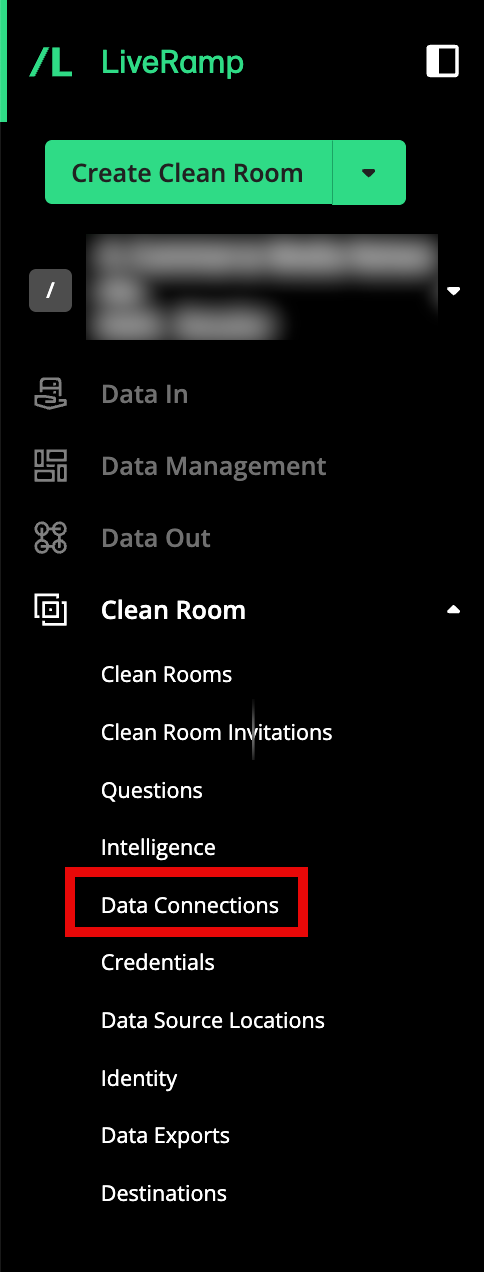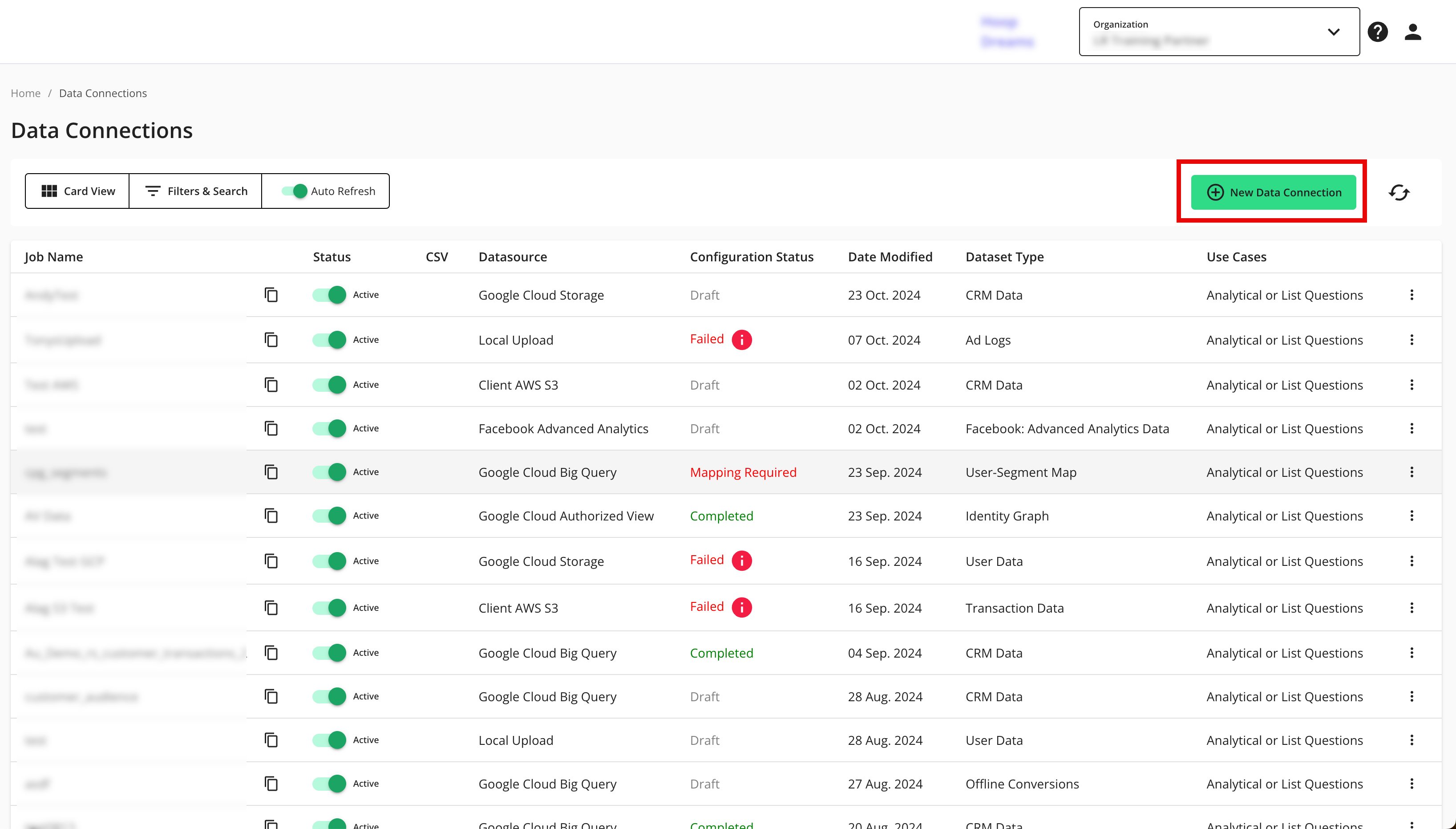Configure a Snowflake Pattern Data Connection
If you have data in Snowflake and want to be able to use that data in questions in LiveRamp Clean Room, you can create a Snowflake data connection.
A Snowflake data connection for a Snowflake (native-pattern) clean room can be used in the following clean room types:
Snowflake
Note
To configure a Snowflake data connection to be used in either a Hybrid clean room or a Confidential Computing clean room, see "Configure a Snowflake Hybrid Data Connection".
After you’ve created the data connection and Clean Room has validated the connection by connecting to the data in your cloud account, you will then need to map the fields before the data connection is ready to use. This is where you specify which fields can be queryable across any clean rooms, which fields contain identifiers to be used in matching, and any columns by which you wish to partition the dataset for questions.
After fields have been mapped, you’re ready to provision the resulting dataset to your desired clean rooms. Within each clean room, you’ll be able to set dataset analysis rules, exclude or include columns, filter for specific values, and set permission levels.
To configure a Snowflake data connection to be used in a Snowflake (native-pattern) clean room, see the instructions below.
Overall Steps
Perform the following overall steps to configure a Snowflake Pattern data connection in LiveRamp Clean Room:
For information on performing these steps, see the sections below.
Prerequisites
The LiveRamp Clean Room Snowflake CLI Framework must be installed prior to creating a Snowflake Pattern data connection. Installs are supported for both Mac and Windows. Perform the steps in the appropriate article:
Create the Data Connection
Once you've installed the appropriate Snowflake CLI Framework, create the data connection:
Note
if your cloud security limits access to only approved IP addresses, talk to your LiveRamp representative before creating the data connection to coordinate any necessary allowlisting of LiveRamp IP addresses.
From the navigation menu, select Clean Room → Data Connections to open the Data Connections page.

From the Data Connections page, click .

From the tiles that appear, select "Snowflake Data Connection".
Select the Snowflake credential you created when you installed the Snowflake CLI Framework as part of the prerequisites.
Complete the following fields in the Set up Data Connection section:

Note
Database Name, Schema Name, and Table/View Name are case-sensitive and should match to your Snowflake account. LiveRamp Clean Room does not support recursive object dependencies (connection of tables or views requiring generation from different databases) by default.
To use partitioning on the dataset associated with the data connection, slide the Use Partitioning toggle to the right.
Category: Enter a category of your choice.
Dataset Type: Select Generic.
Database Name: Enter the database name from your Snowflake account.
Schema Name: Enter the schema name from your Snowflake account.
Table/View Name: Enter the name of the table or view from your Snowflake account.
Review the data connection details and click .
Note
All configured data connections can be seen on the Data Connections page.
Upload your data files to your specified location.
When a connection is initially configured, it will show "Verifying Access" as the configuration status. Once the connection is confirmed and the status has changed to "Mapping Required", map the table's fields.
You will receive file processing notifications via email.
Map the Fields
Once the above steps have been performed in Google Cloud Platform, perform the overall steps in the sections below in LiveRamp Clean Room.
Note
Before mapping the fields, we recommend confirming any expectations your partners might have for field types for any specific fields that will be used in questions.
From the newly-created data connection, click .

The Map Fields screen opens and the file column names auto-populate.

Click .
Note
Ignore the "Order", "Include", and "Delete" columns. They are not applicable for a Snowflake data connection setup.
The Add Metadata screen opens.

For any column that contains PII data, slide the PII toggle to the right.
Note
If you data contains a column with RampIDs, do not slide the PII toggle for that column. Mark the RampID column as a User Identifier and select "RampID" as the identifier type. If the data contains a RampID column, no other columns can be enabled as PII.
Select the data type (field type) for each column (for more information on supported field types, see "Field Types for Data Connections").
For any partition columns, slide the Allow Partitions toggle to the right.
If a column contains PII, slide the User Identifiers toggle to the right and then select the user identifier that defines the PII data.
Note
When you select "Raw Email" as the user identifier for an email column, those email addresses will be automatically SHA256 hashed.
Click .
Note
Ignore the "PII" column. It is not applicable to a Snowflake Data Connection setup.
Your data connection configuration is now complete and the status changes to "Completed".
You can now provision the resulting dataset to your desired Snowflake clean rooms.